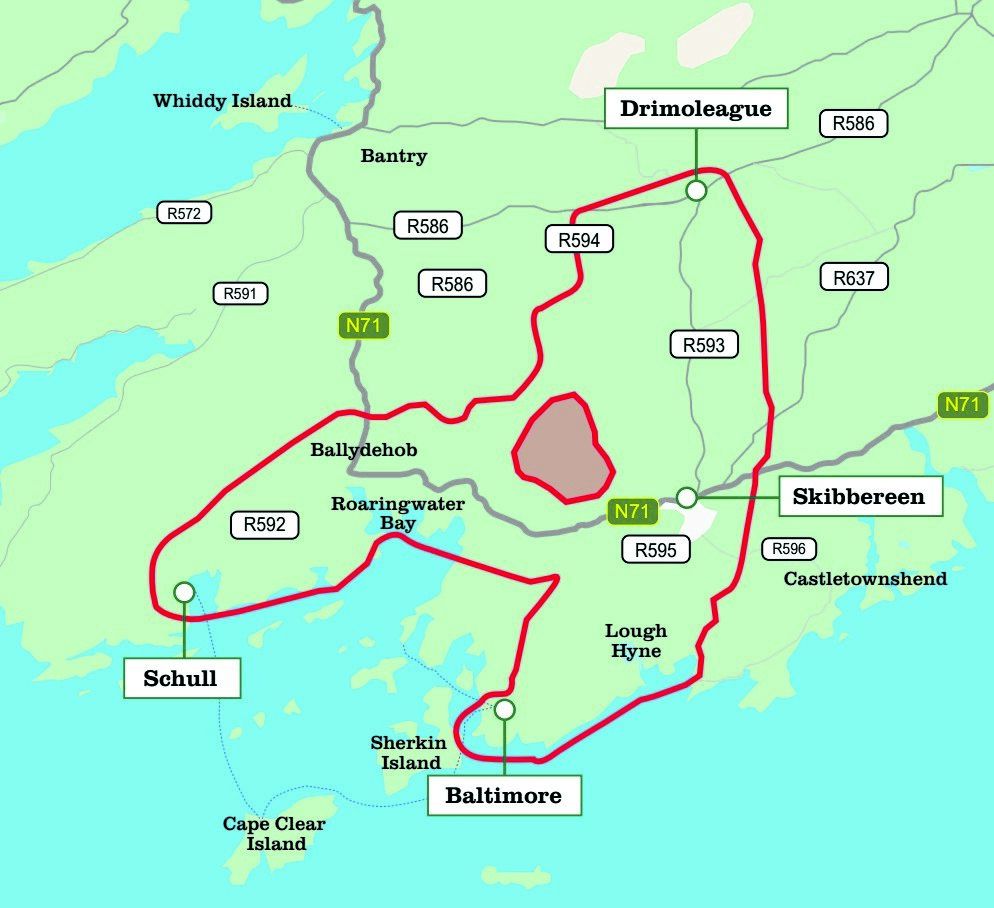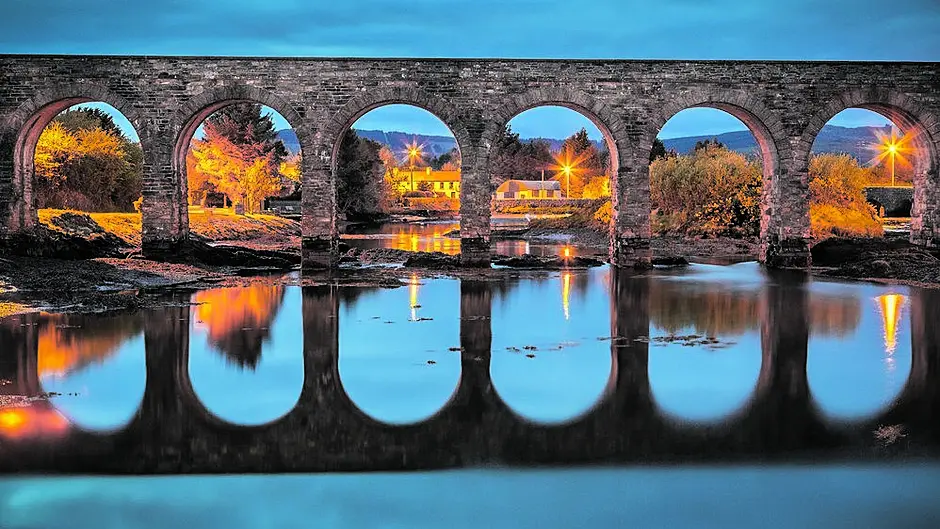With plans for cycle and walking routes in train, there are hopes the greenways will attract tourists and provide locals with safe commuting options to work and school
THE landmark Chetwynd Viaduct and Ballydehob’s ’12 arch’ bridge could be part of new multi-million euro greenway routes in West Cork.
First announced in December, the West Cork Greenway project comprises three
as yet-to-be-confirmed
routes that will go from Skibbereen to Baltimore, Schull, and Drimoleague. Separately, the Cork to Kinsale Greenway will link the two destinations and could potentially include the refurbishment of Chetwynd Viaduct and Goggin’s Hill tunnel in Ballinhassig. Both of these ambitious projects are described as ‘hero products’ for West Cork to attract domestic and international visitors.
But they are also being set up to provide an alternative to commuting by car, and will accommodate cyclists, walkers and wheelers, offering a safe and enjoyable alternative way to travel.
Phase one – the public consultations – have recently taken place for both projects, giving people a chance to see what’s proposed and the initial feedback has been very positive, said Cork County Council senior executive engineer Aoife Mahony.
Funded annually by Transport Infrastructure Ireland’s (TII) Greenway Programme, the projects are still at the initial stages, and it’s envisaged it could be five years before they reach planning stages.

What’s called a ‘trail head’ will be established in Skibbereen with parking space and bike hire facilities in the town.
There will also be ‘depots’ set up in the three locations of Schull, Drimoleague and Baltimore, according to Aoife. Existing infrastructure and car parks could be used in some cases.
With the Drimoleague and Schull routes a commutable 15km, Aoife pointed out how the routes would be established around points of interest, such as schools and shops, as well as places of heritage or historical interest, such as the famous Bandon road viaduct or Ballydehob’s iconic ‘12 arch’ bridge.
‘There’ll also be points of entry and exits along the way to facilitate people, rather than having just one start and end point,’ she said.
 The consultation area for possible routes, (within the red line) being considered by Transport Infrastructure Ireland.
The consultation area for possible routes, (within the red line) being considered by Transport Infrastructure Ireland.
Phase one consultations closed on February 21st, and the next step is to determine potential route options for the greenways. Factors that will have to be taken into consideration include topography and environmental constraints. Those options are expected to be back for public consultation before September, while a database of landowners is being compiled to allow future engagement.
Josephine O’Driscoll, Fáilte Ireland’s Wild Atlantic Way manager, has welcomed the projects. ‘Greenways have been one of the biggest successes in Irish tourism in recent years and with activity holidays on the rise across Europe, they have major potential to draw more overseas visitors to the Wild Atlantic Way and West Cork, while encouraging domestic visitors to explore other parts of Ireland.’
 The Chetwynd Viaduct on the Bandon road out of Cork could be included on the city-to-Kinsale greenway.
The Chetwynd Viaduct on the Bandon road out of Cork could be included on the city-to-Kinsale greenway.
She added that Fáilte Ireland will continue to work with all stakeholders who are at the initial stages of developing greenways, so they can maximise their potential and support sustainable tourism development for communities across West Cork and
beyond.
Businessman Ciaran Fitzgerald, who has hotels in both Kinsale and Schull, said they were ‘potential game-changers’ for both locations.
 At the West Cork Greenways consultation meeting in Schull were members of the project team Jane Anderson and Megan Airey, left, with Cllr Caroline Cronin and Aoife Mahony from Cork County Council.
At the West Cork Greenways consultation meeting in Schull were members of the project team Jane Anderson and Megan Airey, left, with Cllr Caroline Cronin and Aoife Mahony from Cork County Council.
‘Look at the impact the Waterford Greenway has had on places like Dungarvan and other areas. Plus, it provides a brilliant way for people to travel in a more healthy and environmentally-friendly way so it’s a win-win initiative. This is a fantastic vision by Cork County Council, future-proofing both our community and tourism infrastructure with what the consumer wants.’
The projects are part of an overall vision and strategy for the development of an integrated network of greenways and blueways (water trails), as outdoor recreational amenities, for the southern region.










